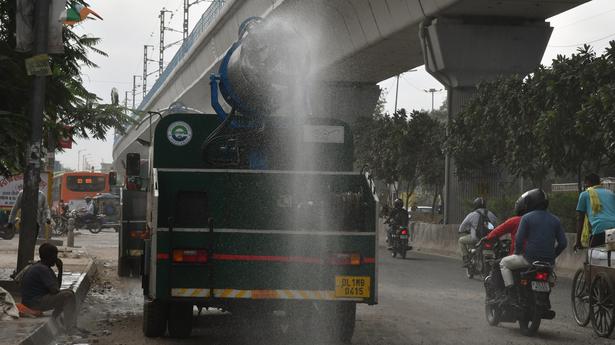
‘Hyperlocal emissions’ behind spike in pollution in Delhi on Dasara
The Hindu
The possible sources of these emissions could be the large number of effigies burnt on the occasion of Dasara and during a political protest, said Indian Institute of Tropical Meteorology officials
Delhi's air quality turned poor on Dasara, though the early warning system of the Indian Institute of Tropical Meteorology had predicted moderate to satisfactory air quality in the capital.
IITM officials said that they did not record any substantial changes in parameters like temperature, wind speed and emissions from farm fires on October 5 and "hyperlocal emissions" could have impacted the air quality.
The possible sources of these emissions could be the large number of effigies burnt on the occasion of Dussehra and during a political protest, they said.
With the air quality in Delhi dropping to the 'poor' category on Wednesday, authorities in the National Capital Region (NCR) have been asked to strictly implement measures under Stage 1 of the Graded Response Action Plan (GRAP) which include penal and legal action against polluting industrial units.
The Centre's sub-committee on GRAP noted in a meeting that there has been a "sudden dip" in air quality parameters in the region which pushed Delhi's Air Quality Index (AQI) into the 'poor' category.
"While this is likely due to a localised influence and the forecasts do not predict any further deterioration, in an effort to maintain the AQI in the moderate category, as a precautionary measure, the sub-committee decided that all actions as envisaged under Stage I of the GRAP - 'Poor' air quality (AQI 201-300) be implemented in right earnest by all the agencies concerned with immediate effect in the NCR," the Commission for Air Quality Management (CAQM) said in an order.
The GRAP has four different stages of adverse air quality: Stage I - 'Poor' (AQI 201-300), Stage II - 'Very Poor' (AQI 301-400), Stage III - 'Severe' (AQI 401-450) and Stage IV - 'Severe Plus' (AQI >450).











